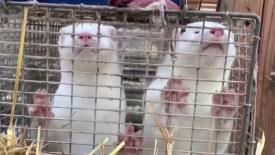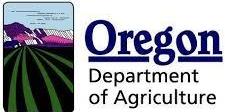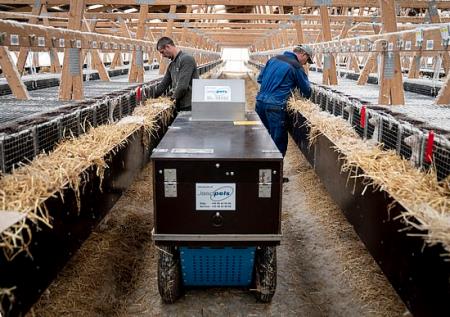
 The Oregon Department of Agriculture has announced that an outbreak of COVID-19 has occurred on a mink farm in Marion County the location of eleven operations. The outbreak was reported on November 19th and the farm was placed under quarantine on November 23rd
The Oregon Department of Agriculture has announced that an outbreak of COVID-19 has occurred on a mink farm in Marion County the location of eleven operations. The outbreak was reported on November 19th and the farm was placed under quarantine on November 23rd
Oregon officials have been extremely tight-lipped as to the location of the farm or whether or not workers have been infected as in Holland, Denmark and Spain. Oregon has the fourth largest mink population after Wisconsin, Utah and Michigan all of which have reported cases in mink.
Animal rights groups and public health organizations have urged depletion of affected mink farms although action by state authorities appears to be confined to quarantine and isolation of farm workers. Despite the assurances that COVID-19 circulating in a concentration of highly susceptible animals represents no danger to the human population, authorities in Oregon are either unaware of or are deliberately ignoring the mutation that has occurred among mink in Denmark. This strain has extended to community transmission among humans.
 Oregon officials stated that they had no plans to initiate surveillance. This is evidently a don't look-don't find strategy that will ultimately rebound to the obvious detriment of mink farmers, but also potentially the population of Oregon and surrounding states. The spokesperson for the Oregon Department of Agriculture stated, "there is no evidence that animals including mink are playing a significant role in the spread of COVID-19 to people". She added, "currently in the U.S. there is no evidence of mink-to-human spread, however, investigations are ongoing". This statement represents either ignorance or mendacity. Possibly both with a tinge of self-delusion.
Oregon officials stated that they had no plans to initiate surveillance. This is evidently a don't look-don't find strategy that will ultimately rebound to the obvious detriment of mink farmers, but also potentially the population of Oregon and surrounding states. The spokesperson for the Oregon Department of Agriculture stated, "there is no evidence that animals including mink are playing a significant role in the spread of COVID-19 to people". She added, "currently in the U.S. there is no evidence of mink-to-human spread, however, investigations are ongoing". This statement represents either ignorance or mendacity. Possibly both with a tinge of self-delusion.
The Oregon situation is obviously a case of a state department of agriculture protecting a local non-essential livestock industry and thereby "ignoring the greater issue of health". As previously stated, the "assurances" by state agricultural spokespersons are eerily reminiscent of similar unfounded optimism provided by the Ministry of Agriculture in the U.K. in 1997 regarding bovine spongiform encephalopathy (BSE or ‘mad cow disease’) before it became evident that BSE was a foodborne zoonosis responsible for atypical, fatal Creutzfeld-Jacob Disease.
Denmark has depleted 15 million mink following emergence of a variant strain of SARS-CoV-2 accompanied by community transmission in urban centers distant from Jutland where mink farms are concentrated. A further justification for this action was to prevent extension of COVID to wild Mustelidae including weasels, otters, badgers and wolverines. Recent reports confirm recovery of SARS-CoV-2 from feral mink in thge vicinity of infected farms in Utah, these escapees now represent a potential wildlife reservoir.